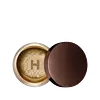Charlotte Tilbury Airbrush Brightening Flawless Finish Powder Versus Hourglass Cosmetics Veil Translucent Setting Powder
What's inside
What's inside
 Key Ingredients
Key Ingredients

 Benefits
Benefits

No benefits
 Concerns
Concerns

 Ingredients Side-by-side
Ingredients Side-by-side

Talc
AbrasiveMica
Cosmetic ColorantMethyl Methacrylate Crosspolymer
Silica
AbrasiveDimethicone
EmollientNylon-12
Lauroyl Lysine
Skin ConditioningZinc Stearate
Cosmetic ColorantCaprylic/Capric Glycerides
EmollientPentaerythrityl Tetraisostearate
EmollientWater
Skin ConditioningEthylhexylglycerin
Skin ConditioningPotassium Sorbate
PreservativeDimethiconol
EmollientSodium Hyaluronate
HumectantCollagen Amino Acids
MoisturisingSorbitol
HumectantLeuconostoc/Radish Root Ferment Filtrate
AntimicrobialPropanediol
SolventHumulus Lupulus Oil
Masking1,2-Hexanediol
Skin ConditioningCaprylyl Glycol
EmollientXanthan Gum
EmulsifyingAscorbic Acid
AntioxidantColloidal Gold
AntimicrobialGlutathione
Tin Oxide
AbrasiveCI 77891
Cosmetic ColorantIron Oxides
Talc, Mica, Methyl Methacrylate Crosspolymer, Silica, Dimethicone, Nylon-12, Lauroyl Lysine, Zinc Stearate, Caprylic/Capric Glycerides, Pentaerythrityl Tetraisostearate, Water, Ethylhexylglycerin, Potassium Sorbate, Dimethiconol, Sodium Hyaluronate, Collagen Amino Acids, Sorbitol, Leuconostoc/Radish Root Ferment Filtrate, Propanediol, Humulus Lupulus Oil, 1,2-Hexanediol, Caprylyl Glycol, Xanthan Gum, Ascorbic Acid, Colloidal Gold, Glutathione, Tin Oxide, CI 77891, Iron Oxides
Ingredients Explained
These ingredients are found in both products.
Ingredients higher up in an ingredient list are typically present in a larger amount.
This ingredient comes as a powder made up of small, porous, microbeads. It is used to add a silky feel to products and also helps absorb oil.
Mica is a naturally occurring mineral used to add shimmer and color in cosmetics. It can also help improve the texture of a product or give it an opaque, white/silver color.
Serecite is the name for very fine but ragged grains of mica.
This ingredient is often coated with metal oxides like titanium dioxide. Trace amounts of heavy metals may be found in mica, but these metals are not harmful in our personal products.
Mica has been used since prehistoric times throughout the world. Ancient Egyptian, Indian, Greek, Roman, Aztec, and Chinese civilizations have used mica.
Learn more about MicaSilica, also known as silicon dioxide, is a naturally occurring mineral. It is used as a fine, spherical, and porous powder in cosmetics.
Though it has exfoliant properties, the function of silica varies depending on the product.
The unique structure of silica enhances the spreadability and adds smoothness, making it a great texture enhancer.
It is also used as an active carrier, emulsifier, and mattifier due to its ability to absorb excess oil.
In some products, tiny microneedles called spicules are made from silica or hydrolyzed sponge. When you rub them in, they lightly polish away dead skin layers and enhance the penetration of active ingredients.
Learn more about Silica